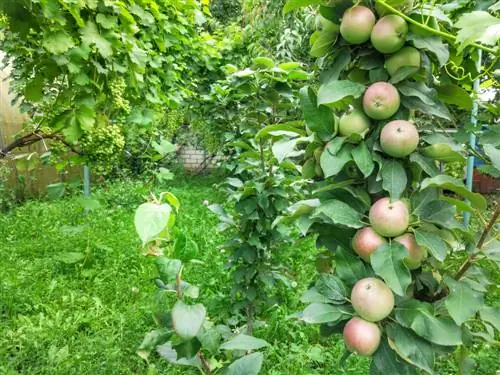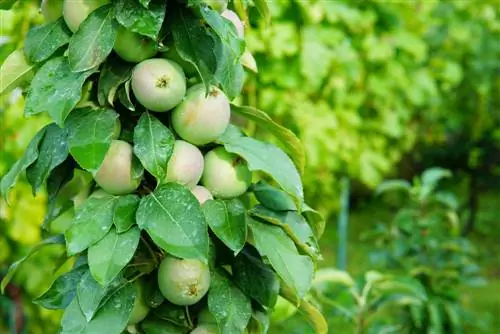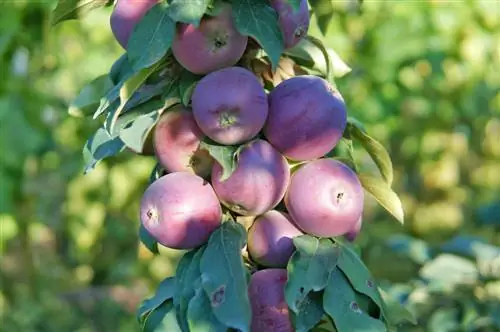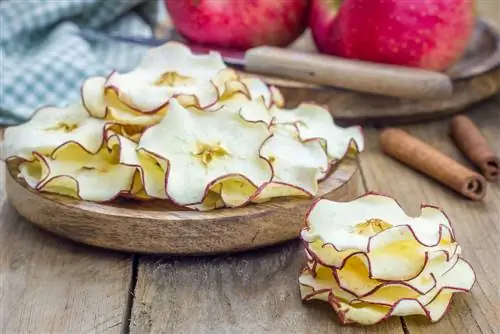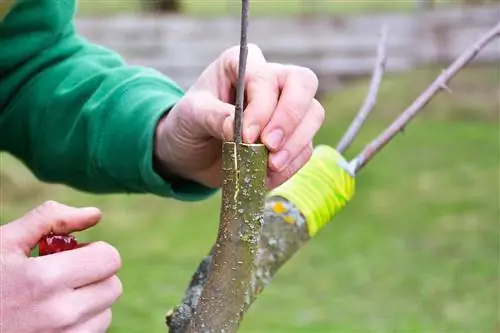- Author admin [email protected].
- Public 2023-12-16 16:46.
- Last modified 2025-01-23 11:21.
With specially bred columnar fruit varieties, even hobby gardeners can achieve significant yields in a small garden or on a balcony. However, this type of fruit is sometimes a bit delicate and requires regular care, especially when grown in pots.
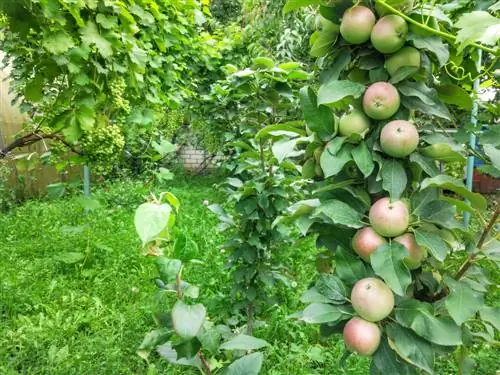
How do I properly care for columnar fruit?
Pillar fruit requires regular watering, repotting every 5 years, annual cutting, pest control, protection from diseases, balanced fertilization and, if necessary, winter protection. Targeted thinning of the fruit can also improve the quality of the remaining fruit.
How often should columnar fruit be watered?
In a sunny location, care should of course be taken to ensure that columnar fruit trees do not dry out in their planters, especially during and after the flowering period. However, it should be sufficient to water heavily about twice a week. Under no circumstances should you forget the drainage holes at the base of the pot, as columnar fruit can die due to waterlogging at the roots. Sometimes it can also make sense to place the pot on small wooden blocks instead of on a saucer to provide some distance from the ground. Like other types of fruit, columnar fruit planted in the garden only requires additional watering immediately after planting or in extremely dry phases.
Does columnar fruit need to be repotted often?
Frequent repotting is only necessary for columnar fruit if relatively small planters are used. If you choose plant pots with a volume of at least 30 or 40 liters from the outset, repotting will only be necessary about every 5 years. Above all, the substrate should be renewed and enriched with mature compost for long-term fertilization.
When and how is columnar fruit cut?
Basically, columnar fruit should not only be cut once it has reached a desired maximum height, but rather annually from a young age. A distinction is made between summer pruning immediately after the harvest and winter pruning when the sap is dormant. Pruning measures should not only aim to maintain the columnar growth habit, but also to increase plant he alth by keeping the foliage not too dense.
Which pests can become a problem for columnar fruit?
Aphids can often be discovered more easily due to the compact growth habit of columnar fruit than on large fruit trees. However, these only have to be actively combated if they multiply significantly. There are various options for this case:
- Use beneficial insects specifically against aphids
- Remove aphids with a sharp jet of water or a cleaning solution
- cut out and dispose of affected shoots if necessary
How do you protect columnar fruit from diseases?
Columnar apples often have to struggle with scab and mildew, while columnar pears are affected by pear rust. If you don't want to use special sprays against the infestation, the only thing that helps is identifying and cutting out affected areas early and selecting apple varieties that are resistant to powdery mildew.
What should be taken into account when fertilizing columnar fruit?
If columnar fruit is grown in pots or newly planted in the garden, ripe compost and horn shavings can provide a certain amount of long-term fertilization. In addition, the plants should also be supplied with a suitable complete fertilizer to ensure he althy plant growth and a good yield. However, you should no longer fertilize in autumn so that the plants can adjust to hibernation in time.
How do you get columnar fruit through the winter?
As long as columnar fruit is not transplanted too close to the onset of winter, it is generally well hardy. In very cold locations, columnar peaches and columnar apricots should sometimes be wrapped in some garden fleece, but should then be unpacked again in spring in time for budding. In general, sunny and drafty locations should be avoided in order to prevent the tree bark from bursting due to large temperature fluctuations.
Tip
Even with heavy fertilization, for some columnar fruit varieties, not all of the numerous fruits that are planted reach full ripeness and a corresponding fruit sweetness. Even if it probably hurts every gardener a little: After flowering, remove some of the fruits that are too numerous in order to maintain good quality of the remaining fruits.

